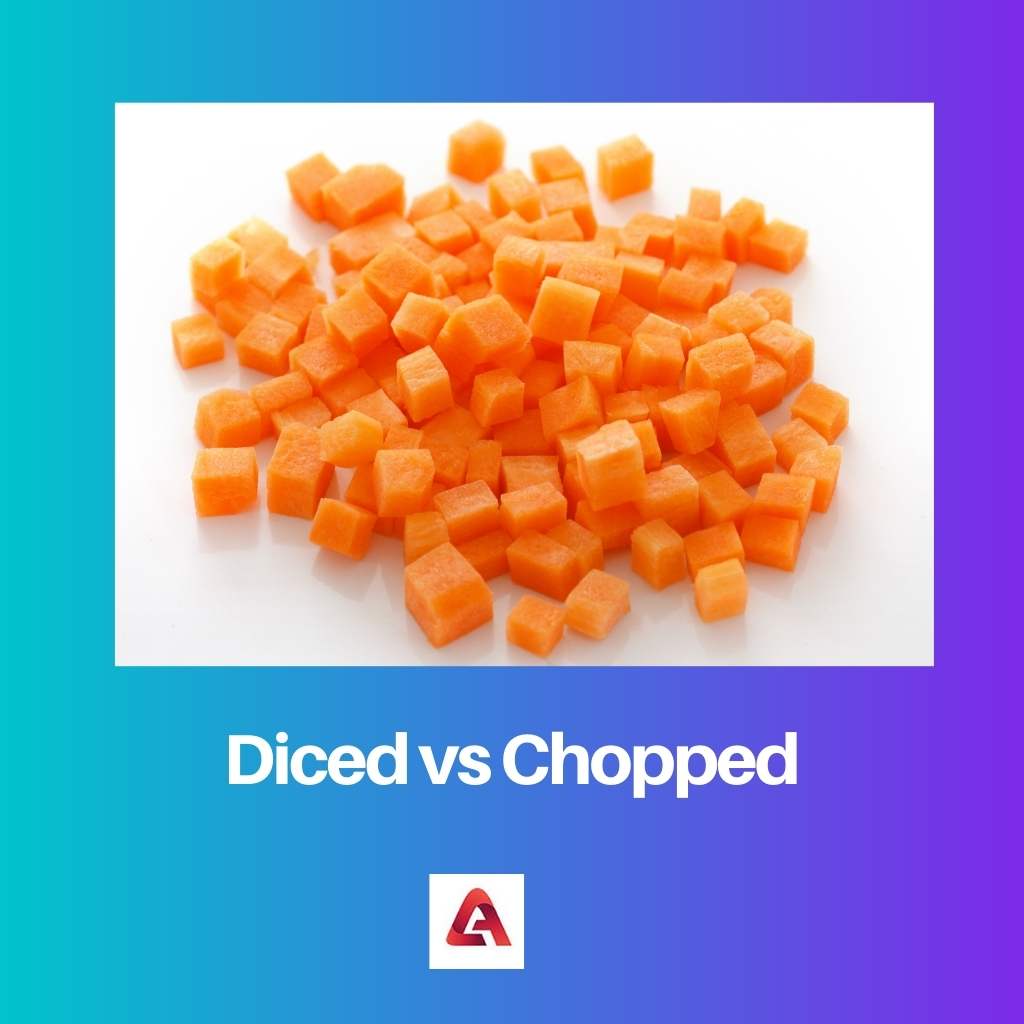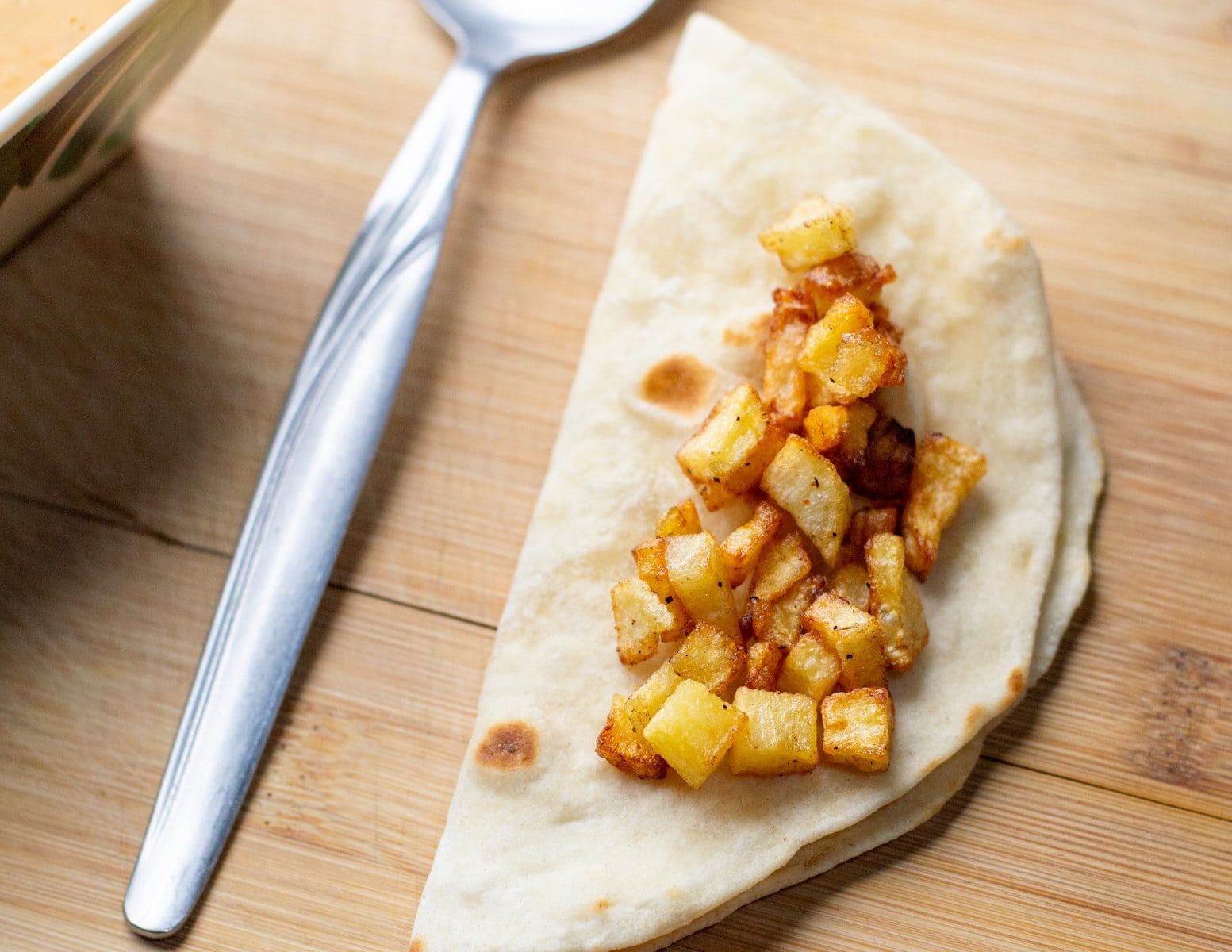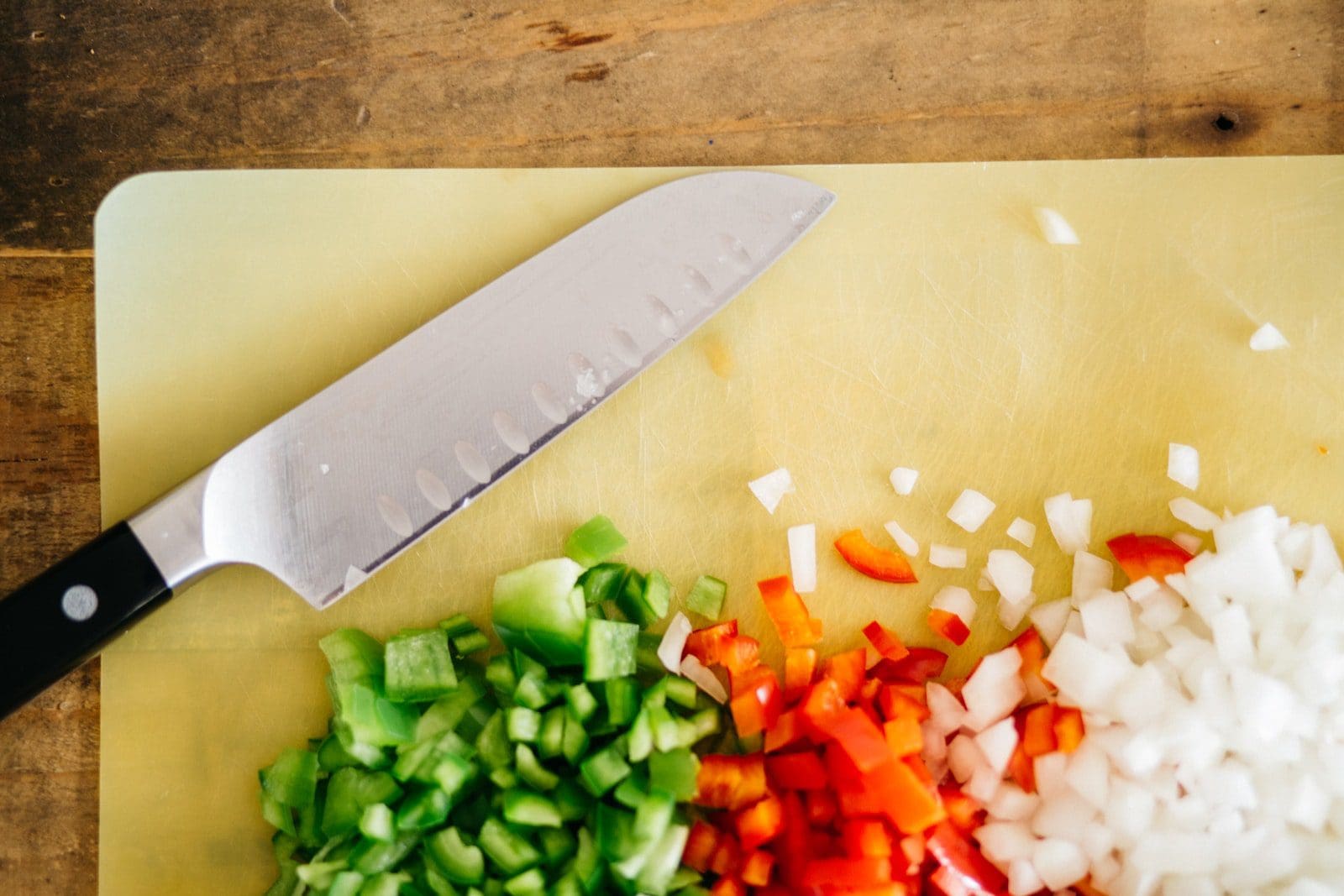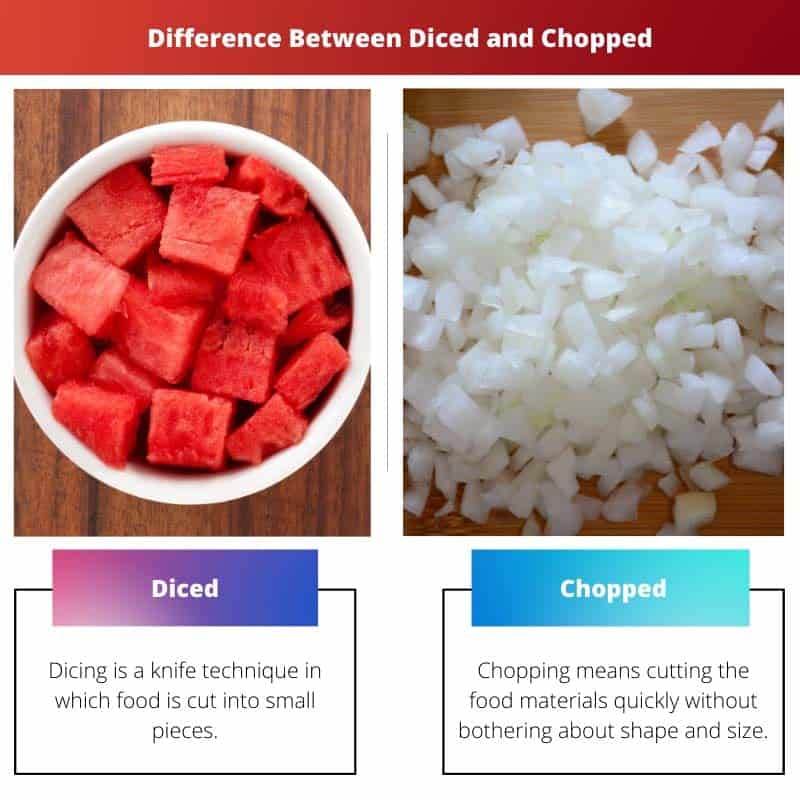In the culinary world, there are different types of techniques through which fruits, meats, cheese, and vegetables are cut into different shapes and sizes.
The different methods include mincing, chopping, and dicing.
Chopping and dicing are the most common technique as it decides the final product you want at the time of cooking a specific dish. These two methods make it very easier to cook the food and then eat them.
Key Takeaways
- Diced refers to cutting food into small cubes, while Chopped refers to cutting food into irregularly shaped pieces.
- Diced food is more uniform in shape and size, while Chopped food has a more rustic and uneven appearance.
- Diced food is used in salads, soups, and stews, while Chopped food is used in sautés, stir-fries, and toppings.
Diced vs Chopped
The difference between diced and Chopped is that in dicing, small pieces of a food product are done, whether it be fruits or vegetables. In chopping, the cutting of food is in large chunks or chopped. While chopping, it requires a certain amount of force and concentration with a sharp knife. In dicing, not so much force or concentration is needed.

Dicing is a knife technique in which food is cut into small pieces. Vegetables and food are diced because they give an extra flavor to the food. By dicing, the inner area of food is exposed.
In dicing, small cubes are cut so that they can be either steamed, baked, or fried. Dicing vegetables makes cooking easier because all the pieces are cut into equal pieces. It can be done for aesthetic purposes as well.
Chopping means cutting the food materials quickly without bothering about shape and size. Usually, it has larger chunks or pieces. It is one of the important knife-cutting techniques and is used frequently.
This technique is used in almost all recipes. Chopping is a fast process where hands are motioned at a fast pace. Though while chopping, there is no uniformity in the size of the food.
Comparison Table
| Parameters of Comparison | Diced | Chopped |
|---|---|---|
| Size | Small | Large |
| Force | Less | Greater |
| Preparation | Vegetables | Soups and Salad |
| Purpose | Release flavors | Makes cooking easier |
| Shape | Cubes | Irregular |
What is Diced?
Dicing can be done for two purposes either the beautification of fruits and vegetables, i.e., for aesthetic purposes or culinary purposes.
It is a type of knife-cutting technique where food material is cut into small blocks or diced or cubed as called. When food is diced, it allows the flavor and texture to distribute in the whole dish.
Usually, dicing is used for preparing vegetables. But it can also be used in preparing meat, fruit, or fish.
While dicing the ingredients, it should be about 1/4 to 1/8th of an inch. Dicing doesn’t require much force. But it requires concentration as food items have to be diced carefully.
This process of cutting the food is very time-consuming as well. Movement of the hand and different knives should be used while dicing vegetables as it has to be done precisely.
It has a uniform shape at the end, i.e., cubes.
Carrots, potatoes, and tomatoes are excellent vegetables for dicing as it allows them to cook faster. Dicing is considered good if you are preparing a dish full of mixed vegetables or casseroles.
Dicing has three sizes, i.e., small cubes, medium cubes, and large cubes. There are three steps to dicing the vegetables.

What is Chopped?
Chopping is the most common technique used in every household. In chopping, it is not necessary that food items may be in large chunks.
It can be both in large or small pieces depending upon the requirement of the dish.
Smaller pieces of chopped vegetables and fruits are used in soups and salads because, like diced food items, it also helps to retain the flavors and blend the ingredients in our palettes and taste buds.
A chopping board is used while chopping food items. It is made up of wood. It requires a lot of force while cutting the vegetables.
The shape of the food items are not uniform and even like diced food items. They have irregular shapes. It takes very little time while chop as the hands are very fast-paced while cutting.
Chopped food items are also in small pieces, but they should not be chopped very finely, like garnishes and chutneys.
The size of the chopping should be ¼th inch. Chopped food items are bigger than minced and diced ones. It also impacts the cooking time based on how finely it is chopped according to the dish.

Main Differences Between Diced and Chopped
- Diced items are smaller in size. Chopped items are larger in size, but they can also be smaller depending on the dish.
- Dicing doesn’t require much force because it has to be done precisely. Chopping requires greater force while using a cutting tool, i.e., a knife.
- Vegetables are prepared using dicing in a normal recipe. Soups and salads are prepared using the chopping technique.
- The purpose of a diced product is to release the flavors and texture and distribute them evenly. The purpose of chopped products is to make cooking easier and more time-efficient.
- The shape of a diced product is cubed. The shape of the chopped product is irregular.




